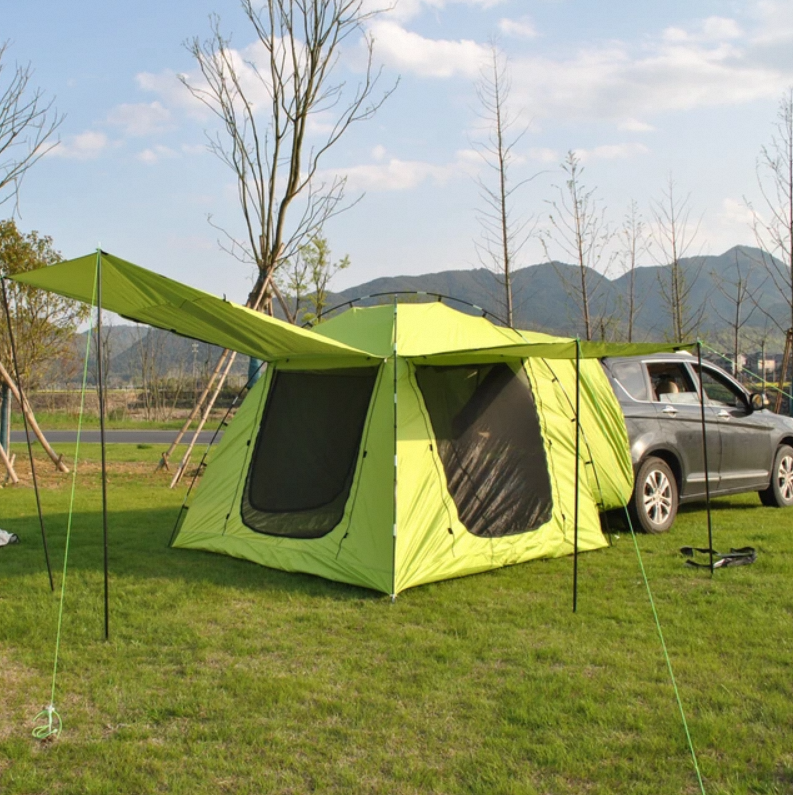Pop-up tents have become a popular choice for outdoor enthusiasts due to their convenience and ease of use. However, one of the concerns with pop-up tents is ventilation. Poor ventilation can lead to condensation, stuffiness, and discomfort, especially in warm weather. In this article, we will discuss the different types of ventilation in pop-up tents.
Mesh Windows
Mesh windows are a common form of ventilation in pop-up tents. They are usually located on the sides or top of the tent and are made of mesh fabric. Mesh windows allow for airflow while keeping insects out. They are particularly useful in warmer weather as they provide a cooling effect and prevent the tent from getting stuffy. Some pop-up tents have multiple mesh windows to provide better airflow and ventilation.
Ventilation Flaps
Some pop-up tents are designed with ventilation flaps. These are usually located near the top of the tent and can be adjusted to allow for better airflow. Ventilation flaps are typically made of mesh or breathable fabric and can be opened or closed depending on the weather conditions. Ventilation flaps are particularly useful in warm or humid conditions as they allow for better airflow and help reduce condensation inside the tent.
Rainfly Vents
Rainfly vents are found on pop-up tents with a rainfly, which is an additional waterproof layer that covers the top of the tent. The vents are located near the top of the rainfly and can be opened or closed to allow for better airflow. Rainfly vents are particularly useful in wet weather as they prevent condensation from building up inside the tent. They also help to keep the tent ventilated and fresh.
D-shaped Doors
D-shaped doors are another form of ventilation in pop-up tents. The D-shape design allows for better airflow compared to a traditional rectangular door. When the door is open, it creates a larger opening for air to circulate in and out of the tent. D-shaped doors are particularly useful for larger tents or ones that are occupied by multiple people.
Cabin-style Tents
Cabin-style tents are designed with vertical walls and a tall ceiling, allowing for better airflow and more headroom. They typically have mesh windows and ventilation flaps that can be adjusted to improve airflow. Cabin-style tents are ideal for larger groups or families who need more space and better ventilation. They also tend to be more comfortable as they allow for better air circulation.
Double-layer Tents
Double-layer tents have an inner layer of fabric and an outer layer that provides better insulation and protection from the elements. The inner layer of fabric allows for better airflow and can help reduce condensation inside the tent. Double-layer tents are particularly useful for camping in wet or humid conditions as they provide better ventilation and help prevent moisture from building up inside the tent.
Tips for Better Ventilation in Pop-Up Tents
- Choose a tent with mesh windows or ventilation flaps for better airflow.
- Consider a tent with a rainfly vent if you plan to camp in wet weather.
- Opt for a cabin-style tent for better airflow and more headroom.
- Use a double-layer tent to reduce condensation inside the tent.
- Keep the tent doors and windows open during the day to allow for better airflow.
- Use a fan or portable air conditioner to improve ventilation in the tent.
In conclusion, pop-up tents can be designed with different types of ventilation to improve airflow and reduce condensation. Mesh windows, ventilation flaps, rainfly vents, D-shaped doors, cabin-style tents, and double-layer tents are some of the common types of ventilation found in pop-up tents. When choosing a pop-up tent, consider the type of ventilation that best suits your needs and preferences.

